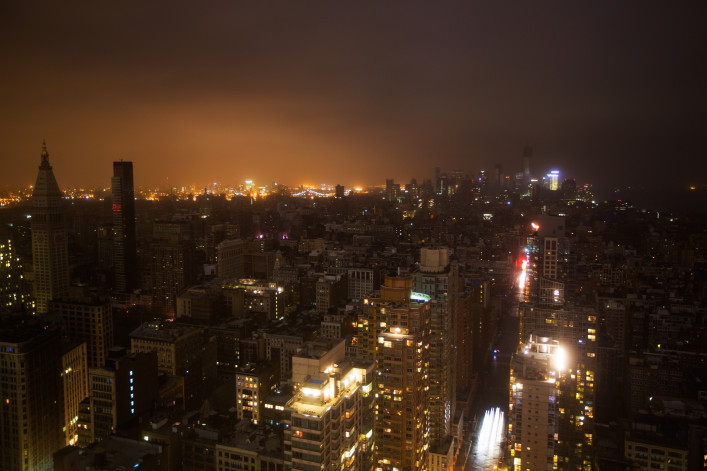Storm Protections for Lower Manhattan – What are the Options?

When Hurricane Sandy made landfall in 2012, Lower Manhattan was hit particularly hard: Floodwaters inundated businesses and residences, knocking out electricity, shutting down subway service and, ultimately, costing millions in damages and lost revenue. (Per the Huffington Post, damage in NYC amounted to an estimated $19 billion.)
Though Sandy was considered by many climate scientists to be an extremely rare event thanks to an unusual storm trajectory compounded by high tides, they say that it’s nevertheless likely that the effect of other storm surges will worsen, due to rising sea levels. It’s welcome news, then, that New York City is set to receive $176 million in federal funding, according to the New York Times, to help erect a storm protection system around Lower Manhattan, an area Sandy proved to be especially vulnerable.
The funds come as the result of the National Disaster Resilience Competition, an initiative of the Department of Housing and Urban Development (HUD) that invited disaster-struck regions to propose projects that would protect residents from similar natural calamities in the future.
The award will bolster existing funds that the Mayor’s Office of Recovery and Resiliency plans to use for protections along the Lower Manhattan waterfront, which the Times reports “could include adding sea walls and temporary flood walls that could be deployed before a storm, and building grass berms that could double as recreational areas.”
What the city can do
It’s not clear yet the exact route the city will take; Manhattan already has seawalls, but at only 5.74 feet high, they were too short to hold back Sandy’s surges. A previous HUD competition resulted in a Danish company, the Bjarke Ingels Group, being awarded $335 million to construct a more extensive one, per the Verge, along with panels on the underside of FDR Drive that will double as temporary flood walls.
And whereas seawalls can leave a bit to be desired aesthetically, berms are raised barriers more easily incorporated into the existing landscape. The Bjarke Ingels Group’s plan includes such a berm, which in several places throughout the Lower East Side would double as public park space. The additional funds that the city receives from HUD will help supplement the work already underway, by financing the construction of storm protections along the East River, from Montgomery Street to Battery Park City.
Dr. Robert G. Traver, a professor of civil and environmental engineering at Villanova University, says that each method of storm protection has its advantages and disadvantages. The good thing about seawalls, Traver says, is that they don’t take up much space—but on the other hand, their structural design is not as simple as it sounds. “In New Orleans, they had something like a seawall, but they tried some experimental work and it failed,” he says. “Some of the flooding [during Katrina] was caused by that.”
Berms are useful, he says, because “grass is actually very resilient to flooding. However, anything requires maintenance,” which should be factored into the costs of storm protections. Furthermore, berms require repairing if a storm does strike. Traver notes that, “If you build it and don’t maintain it, you won’t be assured of the protection. In the U.S., we sometimes kind of ignore that.”
What residents in the flood zones can do
But what about those near the shoreline in ground-floor apartments? Traver says there are a few things safeguards residents can take, like moving valuables to higher places and investing in flood insurance, but he strongly cautions that “if you know a big storm is coming, get out of the way.”
There’s an important distinction to be made, Traver says, between protection and resilience; the latter involves allowing for some flooding while trying to minimize the toll it takes and make for easier repairs. He cites moving electronics to the top, rather than the bottom, of subway stations as one such example of potential damage reduction. On a larger scale, he says, “If there’s an area that we cannot protect, then maybe we should do something about moving people out of that area—but these are never easy questions.”
Not to mention an unlikely prospect in high-density lower Manhattan. “We’re not going to eliminate the risk,” Traver acknowledges. He compares dealing with storms to driving a car—a driver can get good airbags, wear a seatbelt, and use care to reduce the probability of an accident. “But you can’t get rid of it completely,” Traver says. “This is the same kind of situation.”
Related:
3 strategies smart buyers deploy when apartment-hunting in NYC flood zones
Own property near the waterfront? Your flood insurance just got more expensive






















